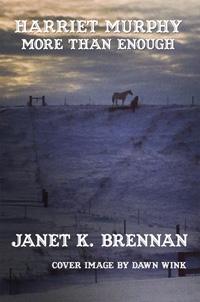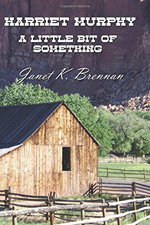Irene Blea and Kit Crumpton both write about subjects that cut to the heart. Kit finds inspiration in her family’s past, writing historical fiction about World War II in her first novel and mental illness in her second. Irene’s work weaves issues of social injustice into the women’s stories in her novels. (This update focuses on each author’s newest work, but links to their first interviews regarding earlier books are included at the bottom of each section.)
The first book in Irene I. Blea’s trilogy, Suzanna (2012), introduces the novel’s namesake, a teenager forced to marry an older man and live in isolation in territorial New Mexico. After enduring hardship and abuse, and giving birth to two children, she makes a choice that will haunt her for the rest of her life. Suzanna’s story continues in Poor People’s Flowers (2014) and concludes in Beneath the Super Moon (2016) where she must “confront the darkness in her heart and the sorrow of her past.”
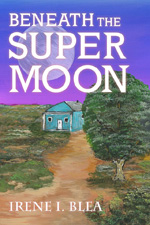 You’ve said before you have trouble choosing titles for your books. How did you come up with the title Beneath the Super Moon?
You’ve said before you have trouble choosing titles for your books. How did you come up with the title Beneath the Super Moon?
My original choice was taken by another book and a movie. After having written Daughters of the West Mesa (2015), which was rather dark in character, a new Suzanna novel seemed lightweight. I wanted it to bring out the things that can happen to women at night, and I had photos of the last supermoon. Suzanna needed light to do what she needed to do at night.
What was the most rewarding aspect of writing the book?
To have completed my Suzanna trilogy, based on the marriage of a very young girl to a much older man, how she ran away, left two sons, and matured for several years with a desire to reunite with them.
What is it about Suzanna that makes readers connect with her?
Her youthful loss of innocence in the first book, that she grows older in the second and third while giving voice to her powerlessness, claiming her power, then putting it into action. She is transformative as a social-historical character. She symbolizes profound change, and captures the lives and culture of people often left out of the American literary tradition.
Of the three novels in your Suzanna series, which one did you enjoy writing the most?
I enjoyed them all, but was challenged to write Beneath the Super Moon because I wanted to write about the evil of the hatred of women, the desire of some to hurt them, diminish them, control them, use them, and discard them. It was a dark subject, but a very real one that demanded more creativity in order to tell the story without editorializing or preaching.
What do you hope your stories accomplish?
Mine are healing stories. They focus on misogyny: prejudice, intolerance, chauvinism, and disdain for women. Women of color cannot escape the double whammy of racism and sexism although they are born in this country. These wounds are embellished on their souls and hard to heal for there are few who specialize in this field. My stories can help.
You come from a family of storytellers. What is the greatest tool in a storyteller’s bag of tricks?
Storytellers listen. We study how people walk, talk, eat, what they react to, and much more. We know our subjects and their environments well. I am bonded to time and place when I tell a story, and I often see no separation between the two. Storytellers are often teachers. I was a university professor for almost 30 years, and I am still teaching in my stories. I have also discovered that I am a performer; I didn’t know this until after I retired.
What is the best compliment you’ve received as an author?
A relatively uneducated, fifty-year-old mountain man, wearing a long beard and an old flannel shirt told me he wants his grandchildren to grow up and be able to read my books.
What writing project are you working on now?
A memoir about how I lost my personal story. I was born on the top and the north side of the mountain in Colfax County, New Mexico. It was the second poorest county in the country that year, next to Appalachia in Arkansas. I was also born to Tewa and Hispanic parents who had to move or starve alongside their starving children. The Americanization of Irene Blea is depressing and profoundly painful. It left spirit, or soul, wounds that I had to heal. I lost my past in order to survive it. All is well, for I transformed into a Ph.D., a world traveler, and an author with readers in New Zealand, Australia, Europe, and Central America, even a few in the Philippines.
Read more about Irene and her writing, as well as her standalone novel Daughters of the West Mesa, in her first interview for SouthWest Writers. You’ll find her on LinkedIn, Facebook and her website IreneBlea.com.
The Fading of Lloyd (2017) is Kit Crumpton’s second novel based on family history. The book follows the Huttlestons’ struggle to cope with their son’s mental illness and the tragic handling of the mentally ill in the early twentieth century.
 The Fading of Lloyd is a novel inspired by your uncle’s life and untimely death. Why did you want to write his story?
The Fading of Lloyd is a novel inspired by your uncle’s life and untimely death. Why did you want to write his story?
When there is a family member that cannot function well, the clarity of that situation becomes easily observable. So Lloyd, and the issues surrounding him, was something I wanted to know. I’m convinced there is a subtle influence—an unspoken energy—that flows down from generation to generation in families. It affects our belief systems, our functioning, and our quality of life. Why do some folks enjoy healthy, prosperous lives and others do not? I find the question intriguing. Life events brought Dr. Murray Bowen’s Family Systems Theory and his Family Therapy in Clinical Practice to my attention. My personal journey expanded to a four-year study of the theory and my nuclear and extended family.
When readers turn the last page in the book, what do you hope they’ll take away from it?
Compassion and understanding. I hope my readers learn how the mentally infirm were viewed and treated in early twentieth century society.
What was the most difficult aspect of writing the book?
Looking at the power of secrets and how they played out in this nuclear family. Writing The Fading of Lloyd gave me context, perspective. The story reveals the secrets, and that power is now diffused, weakened. With context there is understanding and then forgiveness. Closure. Here is a riveting example: I have a surviving uncle, my father’s brother, who knew the Huttlestons well. He never saw Lloyd, never knew he existed. And yet my uncle thought he KNEW this family. Lloyd was a secret, closely held.
What lessons did you learn from writing and publishing your first book, Raiding the Empire of the Sun (2015), that you applied to The Fading of Lloyd?
I built the infrastructure of my indie-author business (Ro Bar Romaani, LLC) while writing my first book. I also had to find a good editor, someone I could trust and whose work I respected. It took time to figure out my requirements, whittle down possibilities to four candidates, conduct interviews, and choose one. I’m thrilled with my choice. The Fading of Lloyd was easier because I was able to leverage off this established business infrastructure. I learned that writing and publishing a book takes a long time, but it’s worth the time to make a good product. I also learned the importance of using beta readers who are either subject matter experts or people whose opinions I respect. Beta readers are fabulous! I use them as a last step before I self-publish. I recognize their contribution in the Acknowledgements of my books.
What is the best compliment you’ve received as an author?
The most amusing compliment for The Fading of Lloyd was on Goodreads: “Warning—have a box of Kleenex nearby, I bawled my eyes out for the last 20 pages or so.” The best comment I received for Raiding the Empire of the Sun: Tinian 1945 was from a lady aviator who bought my book and later asked me, “Are you a pilot?”
What has writing taught you about yourself?
My unconscious mind is a powerful resource, particularly if I’m stuck on something. Sometimes, to ferret out its wisdom, I have to do something physical while the issue percolates. My unconscious mind eventually submits the solution to my consciousness. Once when this approach didn’t work in a timely manner, I prayed and asked God if I was supposed to write the book. After that the solutions presented themselves. I know my subconscious gets bombarded with a lot of data collected throughout the day. So it’s my habit to go to bed early in the evening and let my subconscious work while I sleep. Early morning, physically refreshed, I let this resource direct the words on paper. I’m always amazed at what happens.
What writing project are you working on now?
I’m writing my third book, The Fading of Kimberly, which is a continuation of the storyline of The Fading of Lloyd. I have received a call-to-action from a couple of readers—a need to arrange the demise of my character Mr. Eddie Fisk (bad guy, health care provider). I’m also moved to write it from this comment on Goodreads: “…I encourage people to read this [The Fading of Lloyd] in hopes that they will implore Ms. Crumpton to continue writing about these characters, dive deeper into their lives—Lloyd, Kimberly Weatherspoon, Eddie Fisk with the addition of Dr. Reed, the psychiatrist.”
Discover more about Kit and Raiding the Empire of the Sun in her 2016 interview for SouthWest Writers, and connect with her at KitCrumpton.com.
 KL Wagoner (writing as Cate Macabe) is the author of This New Mountain: a memoir of AJ Jackson, private investigator, repossessor, and grandmother. She has a new speculative fiction blog at klwagoner.com and writes about memoir at ThisNewMountain.com.
KL Wagoner (writing as Cate Macabe) is the author of This New Mountain: a memoir of AJ Jackson, private investigator, repossessor, and grandmother. She has a new speculative fiction blog at klwagoner.com and writes about memoir at ThisNewMountain.com.



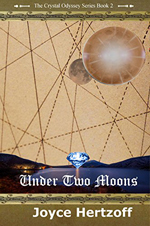





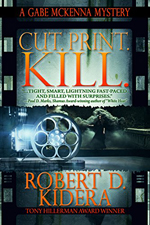
 You’ve written three novels in the Harrie McKinsey mystery series. Did Harrie still surprise you as you wrote her story for Murder on Frequency?
You’ve written three novels in the Harrie McKinsey mystery series. Did Harrie still surprise you as you wrote her story for Murder on Frequency?
